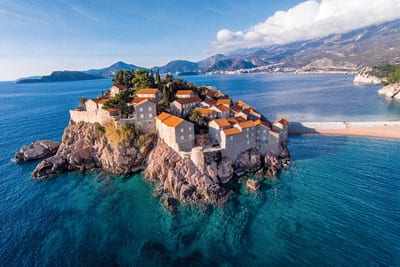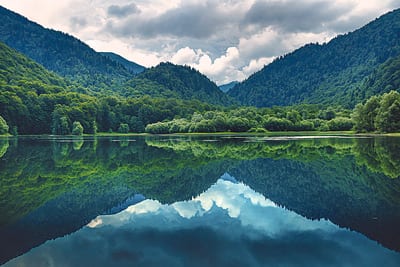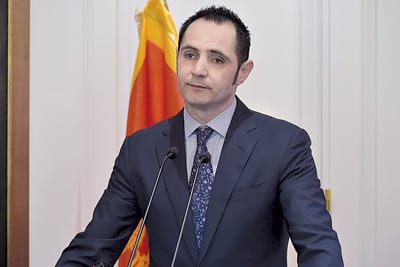With the expected opening of Chapter 27 in June, Montenegro confirms that it is ready to implement the most complex and financially challenging EU integration chapters
It is no longer news that Montenegro is experiencing growth every year in tourist numbers, the expansion of its tourist offer and investments in top-class hotels. Long-term strategic investments in this sector have contributed to the continuous extending of the tourist season and the attracting of tourists interested in the many beauties of Montenegro, both in its coastal region and continental parts.
The good news that Sustainable Development and Tourism Minister Pavle Radulović is able to announce every year will this summer be appended with another news story related to the European integration process and the expected opening of Chapter 27 – Environment and Climate Change, most likely in June.
ADVANCE
The strong progress achieved by Montenegro regarding the Negotiating Position for Chapter 27 has created the conditions for our country to enter into an even more active dialogue with the European Commission
Are you ready for this task, which has proved to be the toughest for many new EU members?
– Although Chapter 27 is one of the most complex Montenegro is absolutely ready to enter into negotiations with the European Commission. The precise plan that will form the basis of for our implementation of the EU acquis in the field of the environment and climate change is defined in the National Strategy for Chapter 27. The negotiating position, within which this plan was presented in the minutest detail, has been fully harmonised with the European Commission, and in 2017 all 28 EU member states assessed that Montenegro is ready to start negotiations under this chapter.
The most important thing at this moment is that the European Commission has developed a Common Position for Chapter 27, which is presenting these days to the EU Member States. With this strong progress that Montenegro has made regarding the Negotiating Position for Chapter 27, conditions have been created for our country to enter into an even more active dialogue with the European Commission and to gradually continue, in line with priorities, to address open issues in this area.
Considering the necessity to invest €1.4 billion by 2035, from which sources do you intend to secure these funds?
– For Chapter 27, Montenegro needs about 1.4 billion euros by 2035, which means that the need to provide these funds is not a one-off, but rather is planned over a longer period of time. It is for this reason that we will wisely build a financial structure, with the inclusion of EU grants, donations, state and municipal budgets, as well as favourable loans. The IPA instrument is also very important, and with membership in the EU Montenegro will become a beneficiary of structural funds, which are much higher than the IPA funds that are currently available.
 In addition to the aforementioned, due to the nature of certain obligations under Chapter 27, some activities will be financed by the private sector (e.g. companies in the field of industry and energy). It is also important to note that work is being carried out intensively on creating the conditions needed to establish the Eco-Fund, which should be an important mechanism for amassing funds and utilising them for programmes and projects in the field of the environment.
In addition to the aforementioned, due to the nature of certain obligations under Chapter 27, some activities will be financed by the private sector (e.g. companies in the field of industry and energy). It is also important to note that work is being carried out intensively on creating the conditions needed to establish the Eco-Fund, which should be an important mechanism for amassing funds and utilising them for programmes and projects in the field of the environment.
We certainly don’t consider this financial investment as an expense, rather a long-term investment in preserving the state of the environment and improving the quality of life of citizens of Montenegro.
Chapter 27 is complex and diverse. What will be your first priorities?
– Chapter 27 is very complex, and the fulfilment of obligations is an enduring and demanding process which – considering the experience of countries from earlier waves of enlargement – extends beyond the projected date of entry into the EU. The Government of Montenegro has recognised several priorities regarding Chapter 27, and those are primarily air pollution, wastewater, waste management and the remediation of industrial pollution, as well as comprehensive protection of nature.
In the area of air pollution, primarily in Pljevlja, constant work will be carried out on reconstruction of the existing network and the construction of a new for the needs of city heating, while the ecological reconstruction of TPP Pljevlja, in accordance with EU standards, is also planned.
The government’s priorities regarding Chapter 27 are air pollution, wastewater, waste management and the remediation of industrial pollution, as well as comprehensive protection of nature
In the field of waste management, activities will continue on the establishment of a system based on the selection, prevention, recycling and reuse of waste. Recently, through amendments to the National Waste Management Plan, the Government selected the final waste management option for the entire territory of Montenegro and created the conditions to establish an adequate waste management system in the north of the country.
Moreover, infrastructure construction in this area will continue, with transfer stations, recycling depots and wastewater treatment plants. One very important activity in the area of waste management is the rehabilitation of larger unregulated landfills, and works will soon begin on the repair of waste grit in the location of the Bijela Shipyard, with a contract being signed these days with the selected works contractor.
What kind of tourist season do you expect this year? How did the reduced budget for promotions impact on preseason results?
– According to all the information we have from the beginning of the year and which we constantly receive from the field, we are very optimistic about this year’s season and expect new growth in all tourist parameters.

Based on the weekly reports that the National Tourism Organisation receives from local tourist organisations, growth in the number of tourists has averaged around 20 per cent since the beginning of the year. During the May Day holidays, there were over 40,000 tourists in Montenegro, or 111% more than in the same period last year. According to official statistics, the number of tourists staying in collective accommodation grew by 27% in the first quarter of this year.
The funds allocated for promotion certainly aren’t at the level that we believe they should be. However, given the budget constraints, I believe that we are achieving the maximum with the funds at our disposal and achieving enviable results, as can be seen when observing the growth rates of all parameters and forecasts for this year and next. We certainly believe that better collections of residence taxes and improvements in the registration of turnover will increase the budget for promotions in the coming period.
According to all the information we have from the beginning of the year and which we constantly receive from the field, we are very optimistic about this year’s season
Ten years after the revision of Montenegro’s key tourism policy document, the Tourism Development Strategy in Montenegro until 2020, we will soon see the presenting of the Strategic Marketing Plan for Tourism in Montenegro 2018- 2022. What new additions will this document bring to the promotion of tourism?
– Through the Strategic Marketing Plan, we have identified priority markets for promotion, taking into account the size of the source market, the number of arrivals in Mediterranean countries, as well as the number of arrivals in Montenegro, the potential for growth, awareness of Montenegro as a tourist destination and, perhaps most importantly, their preferences when choosing a travel destination, or the extent to which the tourist offer of Montenegro is harmonised with those preferences.
The strategic marketing plan also provides guidelines for appearances on these markets, as well as for the development of offers and tourist products that will attract tourists from our main source markets. The document also proposes a series of new goals, initiatives and activities that will further strengthen the development of tourism in the coming period and provide a good basis to unify the strengths of all participants in tourism in the same direction, and that means achieving strategic goals, higher revenues and higher employment in tourism.
Are your plans to convert Montenegro into a year-round tourist destination being followed by the plans of investors and providers of additional services?
– We are very satisfied that our vision of the kind of tourist destination Montenegro should be is shared by investors and the tourist economy generally. Major projects, such as Porto Montenegro, Portonova and Luštica Bay, are based on precisely the idea of a high-quality year-round offer. New large hotel resorts that are managed by world-renowned companies like Karisma and Iberostar are also planning to work throughout the entire year.

Over the past two years, more than 60 construction permits have been issued for the construction of hotel capacities, with an estimated value of over 400 million euros.
The increase in high category accommodation capacities and stronger entry of major tour operators on the market represent good confirmation that the economy is keeping pace with our vision and strategic goal – and that is for Montenegro to be a year-round, high-quality tourist destination.
With the aim of enriching the offer, work is constantly being conducted on the development of new products that satisfy the preferences of tourists and that can even be offered in periods beyond the main peak season. An increase in the number of tourists in the pre- and postseason periods is also evident, and providers of additional services are clearly recognising this trend. Investing in tourism and transport infrastructure, connecting all parts of Montenegro in a high-quality way and increasing accessibility, also contribute significantly to approaching the level of a year-round tourist destination.
Over the past two years more than 60 construction permits have been issued for the construction of hotel capacities, with an estimated value of over 400 million euros
Many countries in the region, included those that are developed, suffer from a lack of professional staff in tourism. How are you dealing with this issue?
– The lack of a sufficient number of professional staff in tourism is evident, which is best seen through the large number of foreigners who come to work seasonally in Montenegro. What is encouraging is the increasing number of educational institutions involved in training personnel for jobs in tourism.
There is certainly a significant increase in interest in these jobs among young people, and I believe that the extending of the tourist season and the fact that the arrival of large tour operators will increase the engagement of employees significantly – from two to three months, up to five to six months – will additionally boost interest among unemployed people to engage in this industry.
In May this year alone, the opening of reconstructed and new hotels led to the creation of over 500 new jobs. Considering projections for the further development of our country’s tourism sector, this is an issue of strategic importance and we monitor all events in this area carefully. That’s why it’s significant that a system of dual education was recently introduced, and I think that it will have a positive impact on the quality of new personnel.